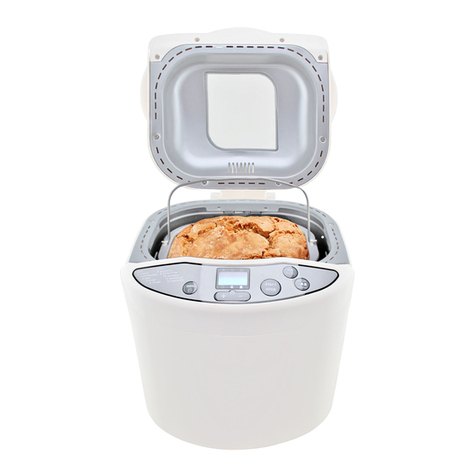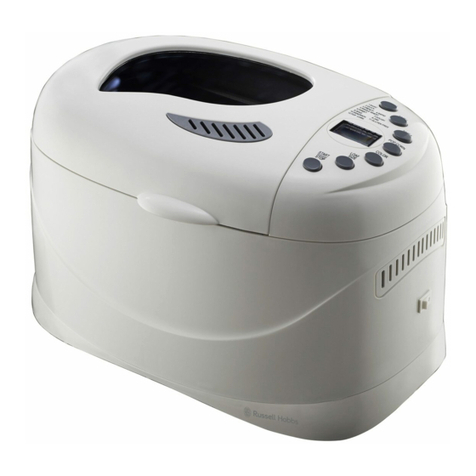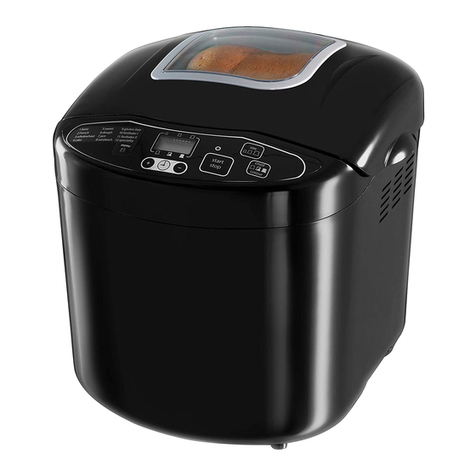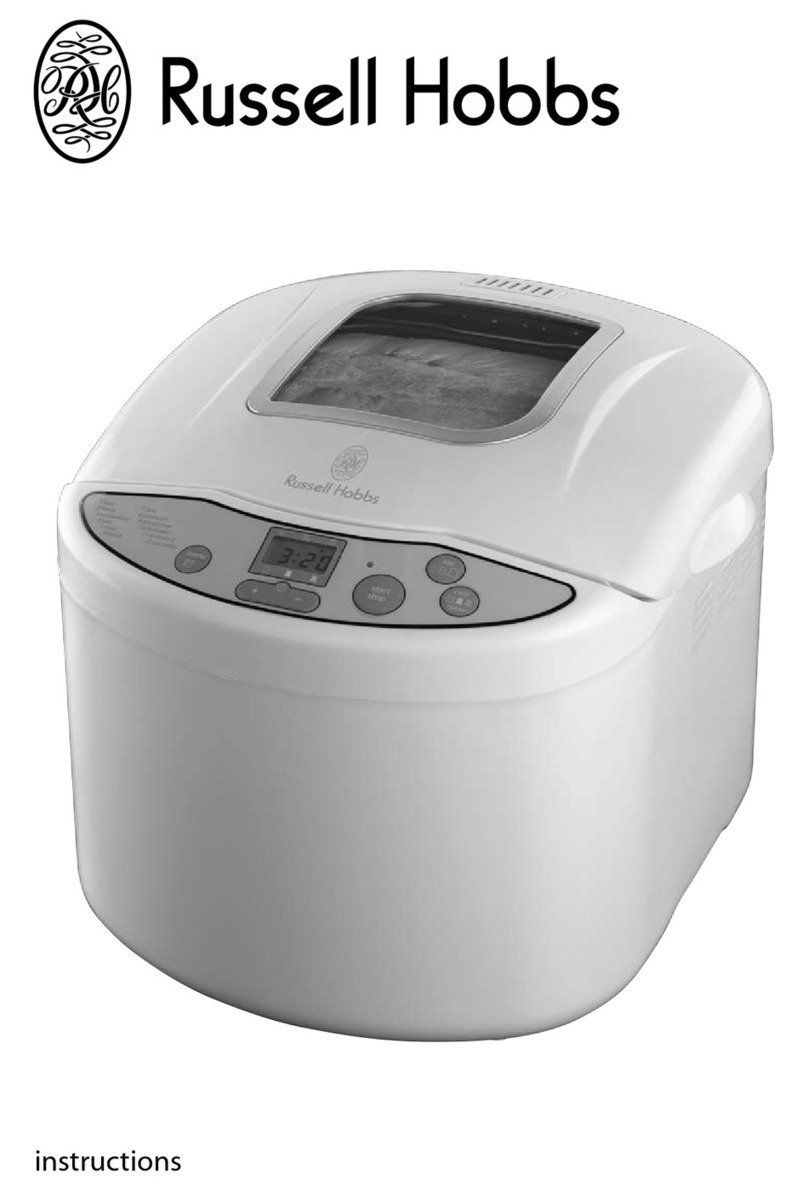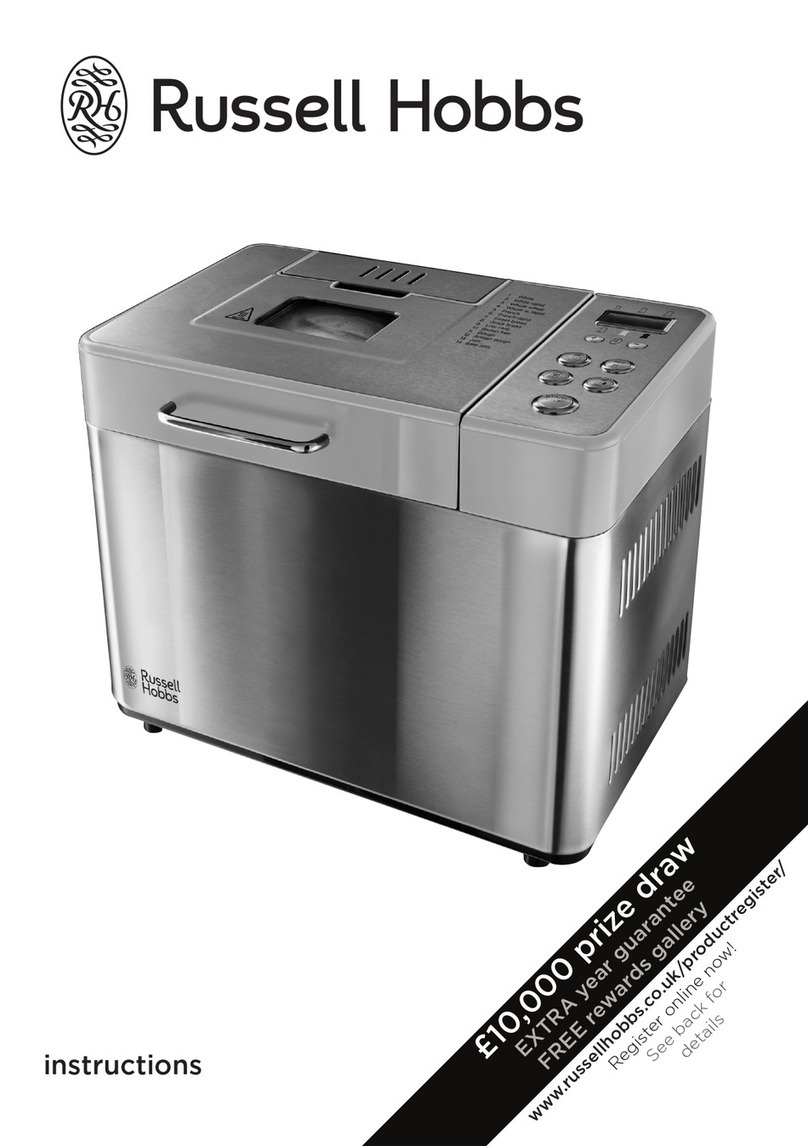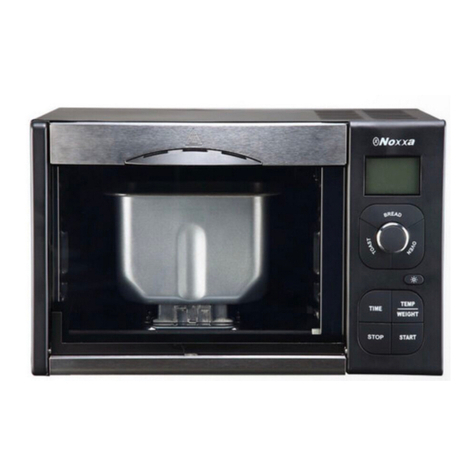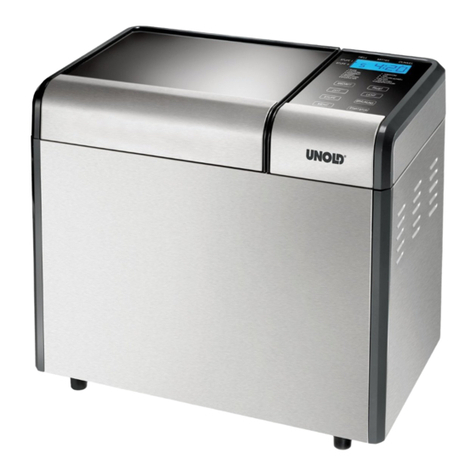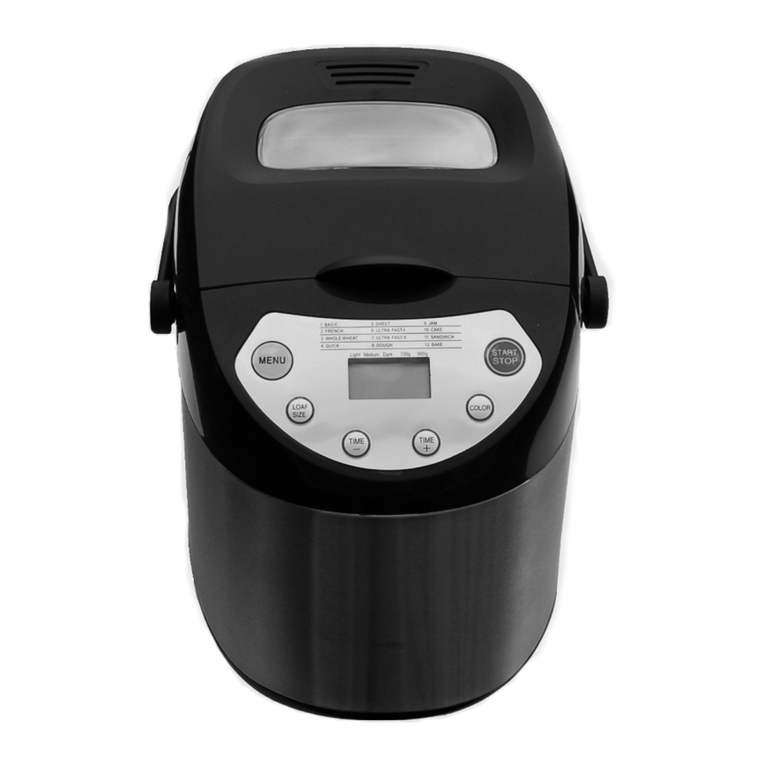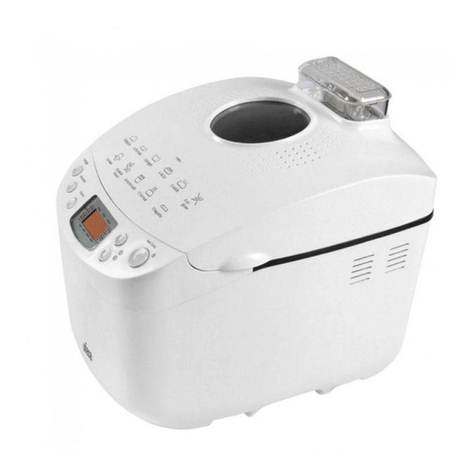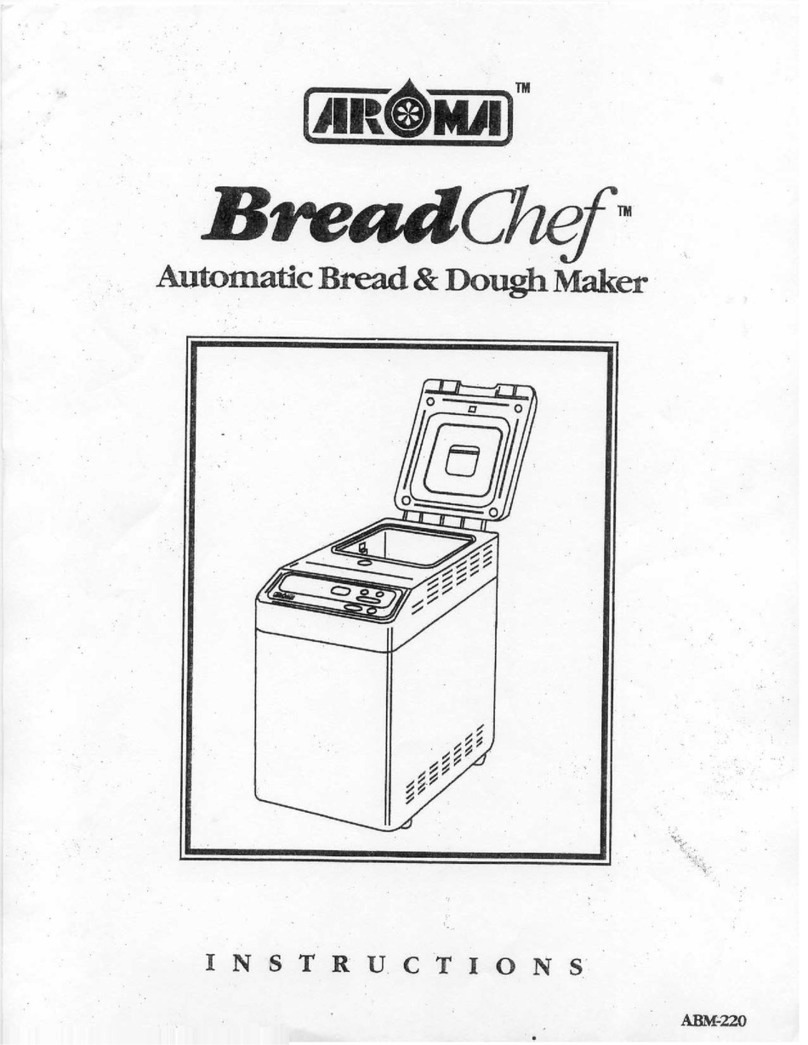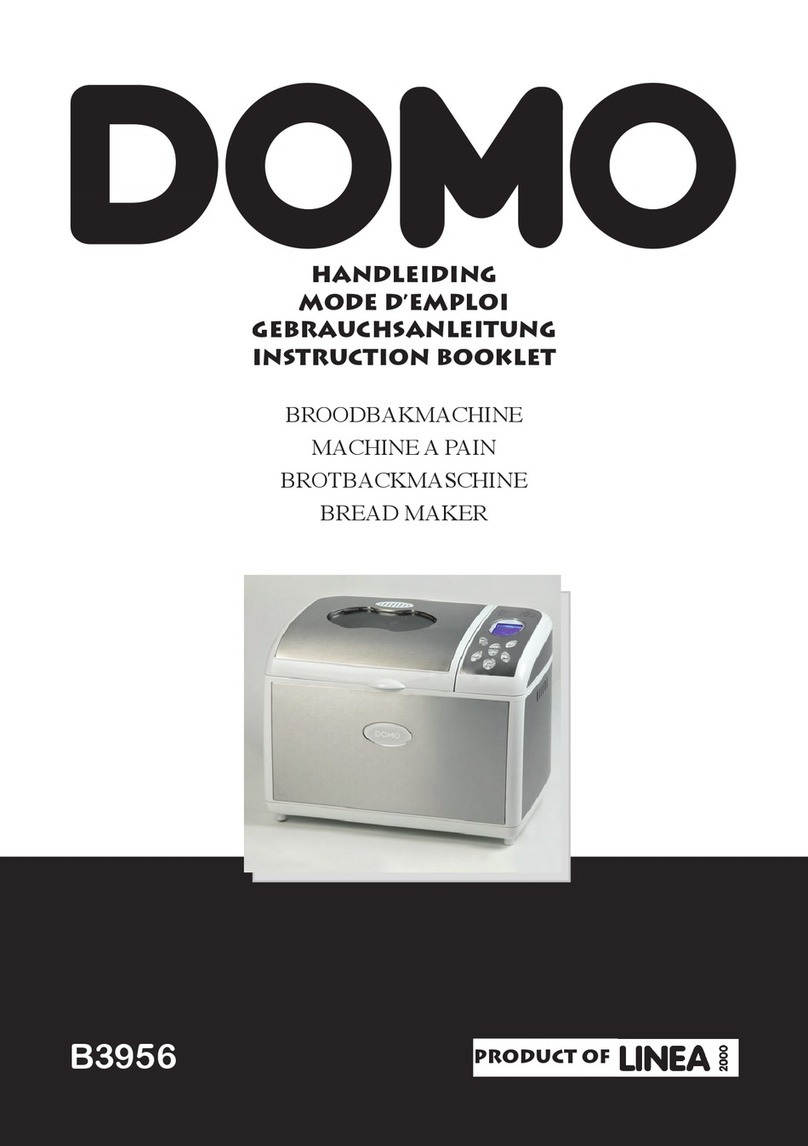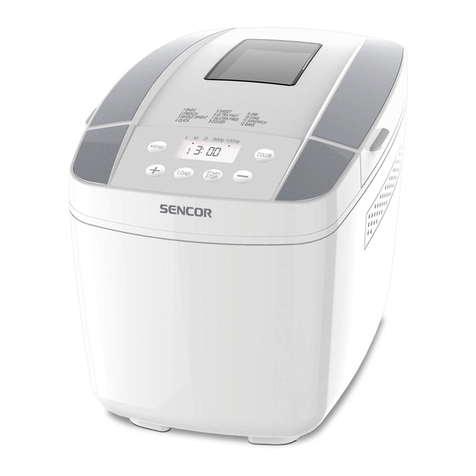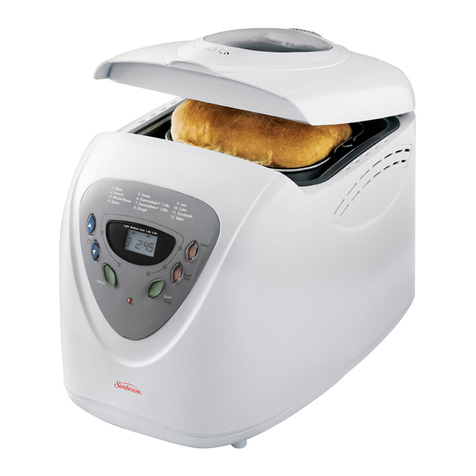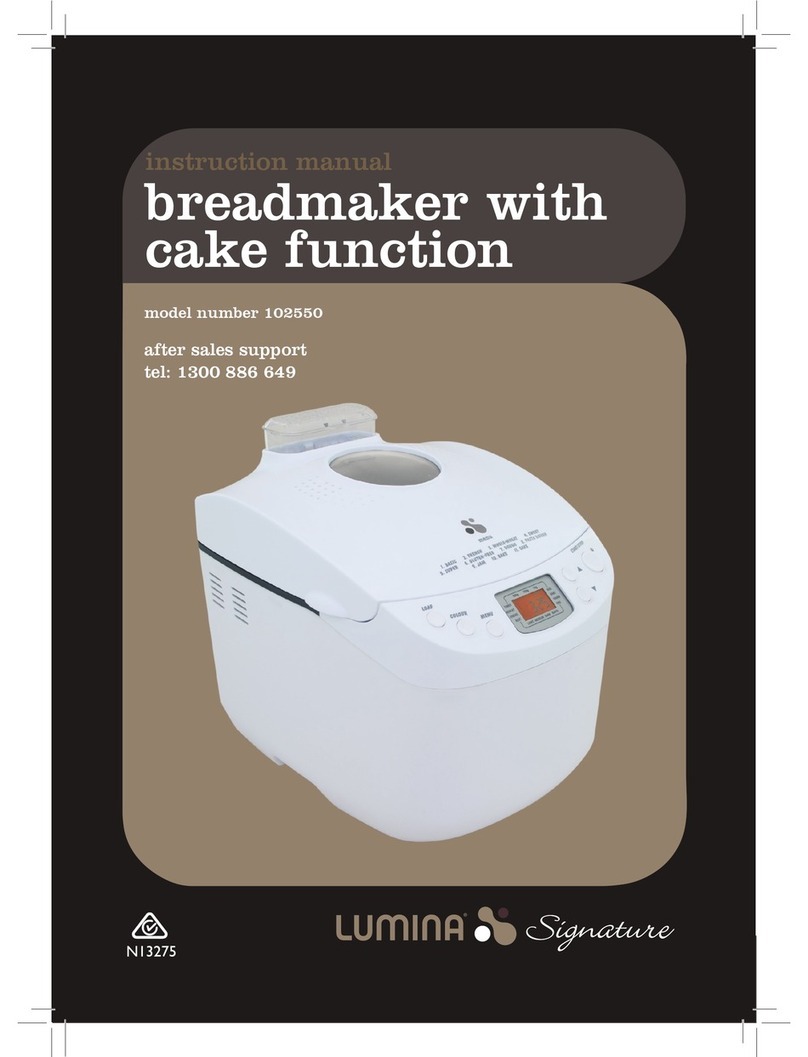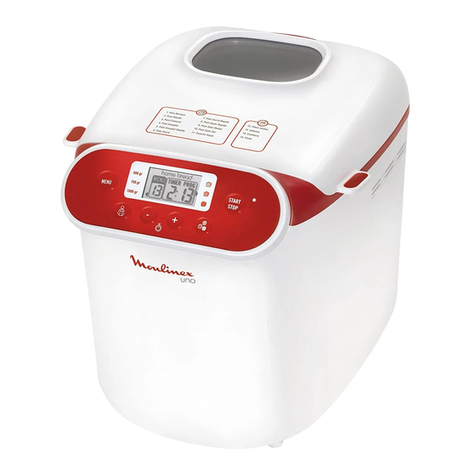
5
CRUST COLOUR
1. Use the crust colour ghhbutton to move the arrow on the top of the display to light g, medium h
, or dark h.
• Light g(display = L), medium h(display = P), dark h(display = H)
• This function only works with programs 1, 2, 3, and 5.
SIZE
1. Use the size button FGH to move the arrow on the bottom of the display to small F(500g), medium
G(750g), or large H(1kg).
2. These sizes are approximate – think of them as small, medium, and large.
3. This function only works with programs 1, 2, 3, 5, and 8.
THE TIMER
• Use the timer to set the nishing time up to 13 hours ahead (including recipe time).
• This function only works with programs 1, 2, 3, and 5.
• Don’t use the timer with a recipe containing fresh milk, yoghurt, cheese, eggs, fruit, onions, or
anything that might go o if left for a few hours in a warm moist environment.
• Leaving the ingredients together for an extended period will inevitably cause some interaction,
especially on a hot or humid day
• Don’t use moist ingredients like fruit.
• Add any nuts or raisins after the our
1. Decide when you want your bread to be ready, e.g. 1800.
2. Check the time now, e.g. 0700.
3. Calculate the dierence between the two times, e.g. 11 hours.
4. Use the +and -buttons to change the time shown on the display from the program time to the time
you’ve just calculated (e.g. 11 hours).
5. Each press will decrease -or increase +the time displayed by 10 minutes
6. You can’t reduce the time to less than the program time.
7. The maximum time which can be shown on the display is 13 hours.
START THE APPLIANCE
1. Press the Ibutton to start the program.
2. The appliance will beep.
3. The display will count down, then beep when it’s nished.
4. If you’re using program 3, kneading won’t start for 30 minutes, while the ingredients are warmed.
5. Have a look at the dough (through the window) after 30 minutes of kneading.
6. If you see any unincorporated ingredients round the walls of the bread pan, open the lid, scrape them
into the dough with a spatula, then close the lid.
7. Scrape only the walls, to avoid the paddle.
FINISHED?
1. To stop the appliance, press the Ibutton, and hold it down for 2 seconds.
2. For best results, remove the bread as soon as it is nished. If you don’t stop it, the appliance will
keep the bread warm for an hour. It will then beep 10 times, and switch o.
3. Unplug the appliance.
4. Steam and hot air will escape when you lift the lid.
5. Wear oven gloves.
6. Open the lid.
GB
DE
FR
NL
IT
ES
PT
DK
SE
NO
FI
RU
CZ
SK
PL
HR
SI
GR
HU
TR
RO
BG
AE
GB
DE
FR
NL
IT
ES
PT
DK
SE
NO
FI
RU
CZ
SK
PL
HR
SI
GR
HU
TR
RO
BG
AE
